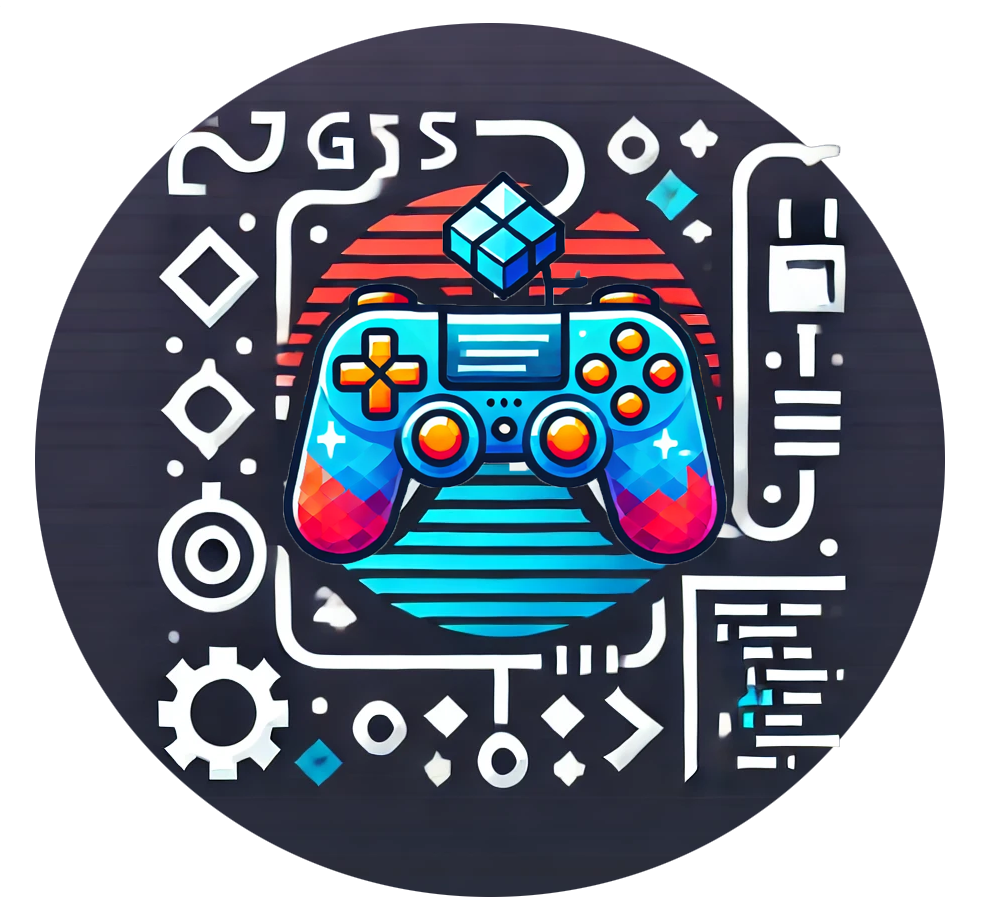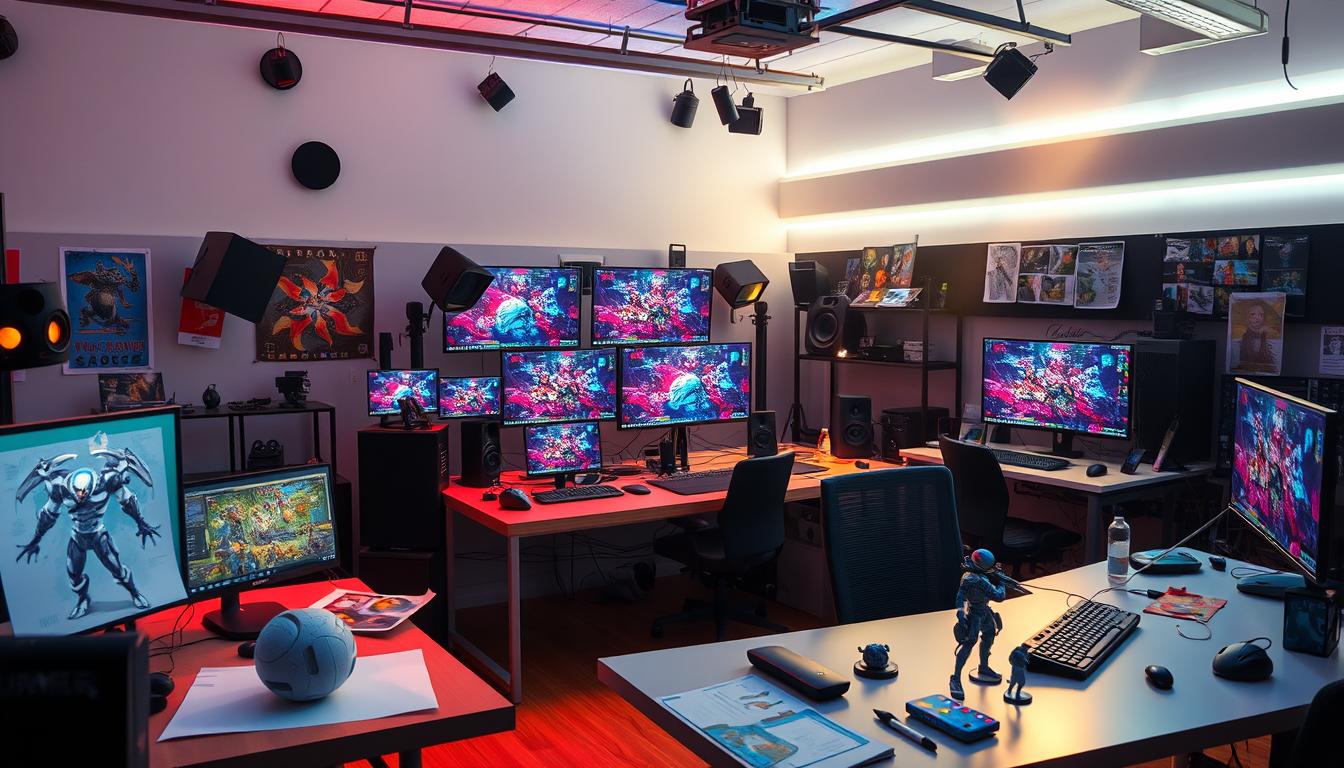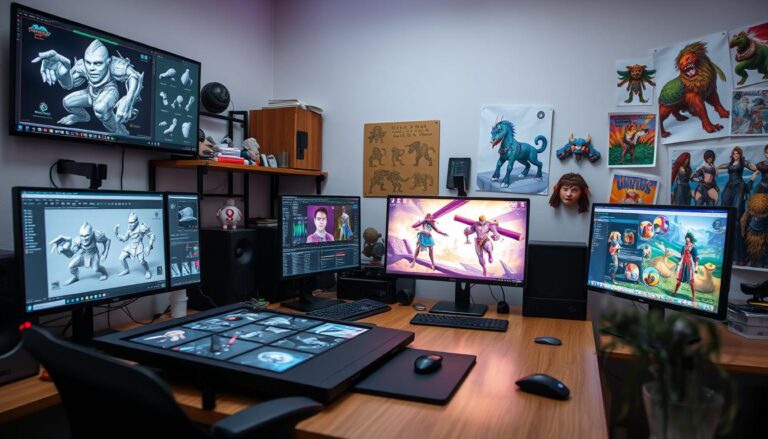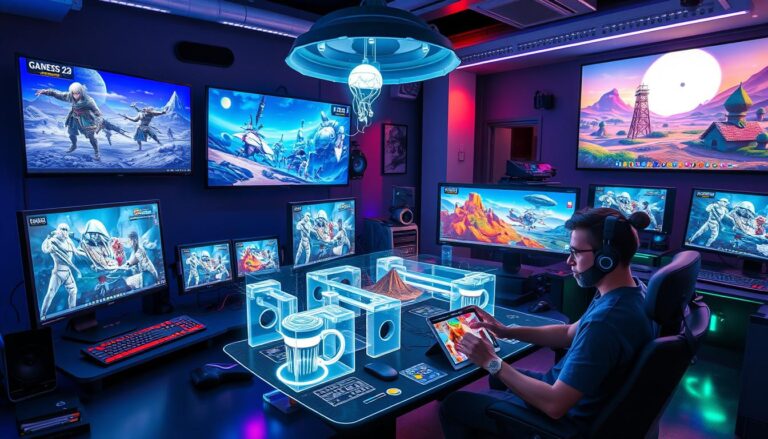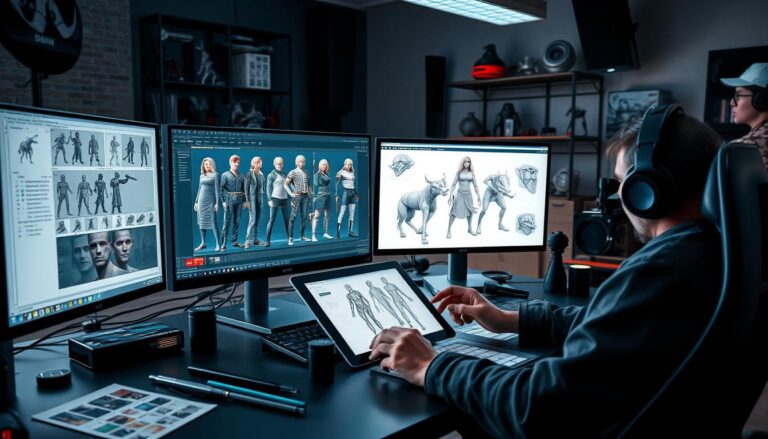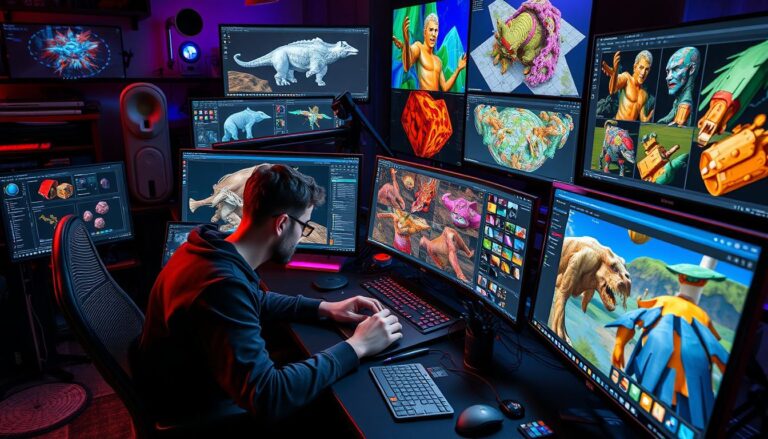What Are the Basics of Lighting in 3D Game Design?
Lighting is key in 3D game design. It greatly affects how players feel and what they see. By adding light to virtual worlds, developers can set moods, highlight key parts, and improve the game’s feel.
Lighting artists mix different light sources to mimic real-world conditions. They aim to tell the story and set the mood of each scene. Games like “Amnesia: The Dark Descent,” “The Legend of Zelda: Breath of the Wild,” and “Red Dead Redemption 2” show how lighting can make a game feel real and engaging.
Lighting also helps players navigate through games. It shows paths, points out goals, and guides players. “BioShock,” the “Portal” series, and “Alan Wake” are great examples of how lighting helps players move through the game.
Understanding Core Lighting Concepts in Game Design
Lighting is key in game design. It sets the mood and atmosphere, guiding the player’s journey. It also evokes emotions. Knowing the basics of lighting is vital for developers to craft engaging 3D worlds.
Role of Lighting in Visual Storytelling
Lighting is crucial in telling stories in games. By adjusting intensity, color, and direction of light, designers can set the mood. This supports the story and gameplay.
Lighting can draw attention to key elements, help players navigate, and set the scene’s tone.
Basic Light Properties and Behavior
Light’s properties like intensity, color, and direction affect how it interacts with surfaces. This creates shadows, highlights, and reflections. Game engines simulate light behavior to make scenes look real and deep.
Impact on Player Experience
Lighting greatly influences the player’s experience. Good lighting can make navigation easier, highlight important details, and stir emotions. By understanding lighting’s impact, designers can craft more engaging games.
Developers must grasp lighting basics to create stunning and meaningful 3D environments. With light, designers can enhance the player’s journey and make virtual worlds come alive.
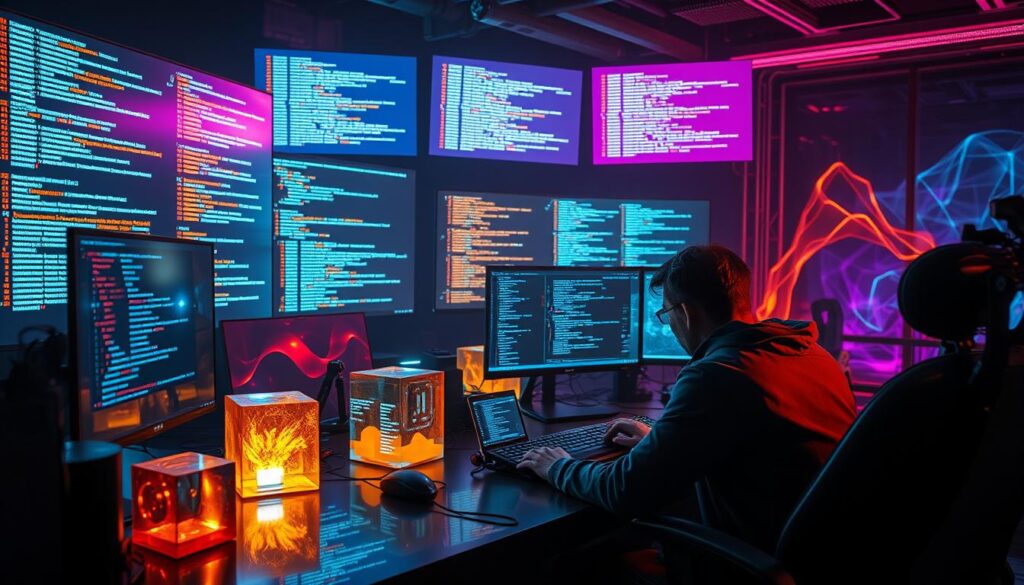
Essential Light Types for 3D Game Development
In Game Physics, Virtual Reality, and Augmented Reality, light types are key. They help make games look amazing and feel real. Let’s look at the main light types used in 3D game making.
Ambient lighting gives a basic glow to the game world. It makes sure every part of the game is visible. This is the base for other lights to work with.
Directional lighting acts like the sun or moon. It creates shadows and depth. This makes the game feel more real.
- Point lighting highlights important parts of the game. It draws the player’s eye to certain objects or characters.
- Spot lighting focuses light on specific areas. It creates dramatic shadows and highlights for storytelling.
By mixing these lights, game makers can create amazing scenes. They can make the game world feel real and engaging. Knowing how to use these lights helps make games better in Game Physics, Virtual Reality, and Augmented Reality.
| Light Type | Description | Primary Application |
|---|---|---|
| Ambient Lighting | Uniform base illumination throughout the game world | Ensuring visibility and establishing a stable lighting foundation |
| Directional Lighting | Simulates natural light sources like the sun or moon | Creating natural-looking shadows and depth in the game environment |
| Point Lighting | Emits light in all directions from a specific point | Emphasizing interactive elements and drawing player attention |
| Spot Lighting | Creates focused beams of light | Directing concentrated illumination to specific areas for visual storytelling |
Using these light types well makes games look great. It pulls players into the Game Physics, Virtual Reality, and Augmented Reality worlds.
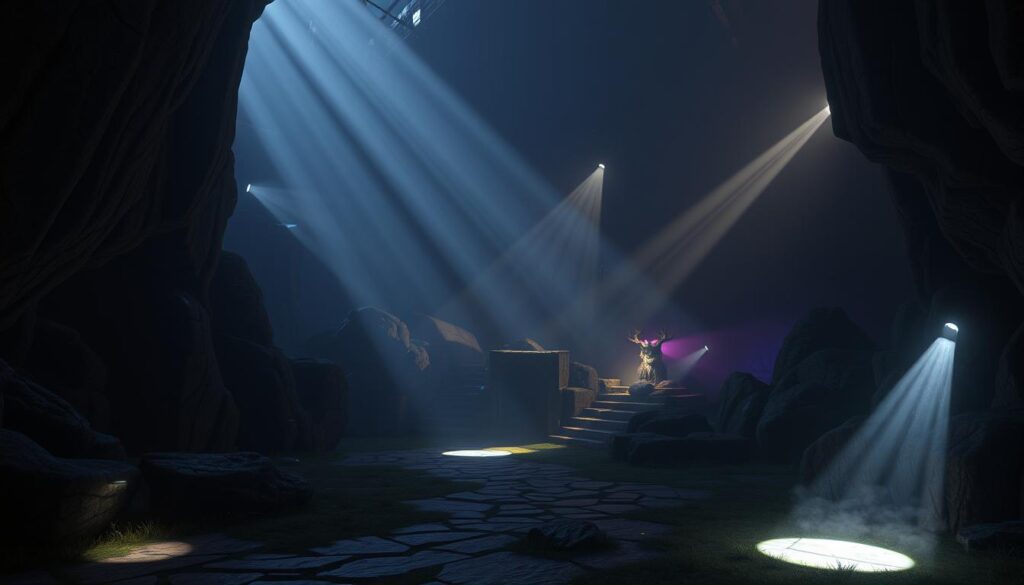
Lighting Materials and Surface Interactions
Lighting materials are key to making 3D game worlds look amazing. In 3D modeling, texture mapping, and shader programming, knowing how materials react to light is essential. Different materials, like diffuse and specular, can greatly improve a game’s look and feel.
Diffuse and Specular Reflection
Diffuse materials scatter light, giving a flat look. Specular materials reflect light, making surfaces look shiny. Understanding these helps designers create a wide range of materials and textures in 3D Modeling, Texture Mapping, and Shader Programming.
Emissive Materials
Emissive materials glow on their own, without needing outside light. They’re great for things like light bulbs or lava. Using these materials adds depth and interest to 3D worlds.
Transparent Surface Handling
Transparent surfaces let light through, giving a soft, glowing look. Handling these materials right is important for realistic scenes. Techniques like blending and refraction help make transparent surfaces look right.
Mastering lighting materials and surface interactions opens up new creative paths. Whether it’s diffuse, specular, emissive, or transparent surfaces, how light interacts with them is crucial. This attention to detail makes 3D games visually stunning and immersive.
Advanced Lighting Techniques and Tools
In 3D game design, lighting is key to making environments look real and stunning. Game developers use advanced techniques to add realism and quality. These include global illumination, light mapping, and light probes, which mimic real-world light interactions.
Global illumination calculates indirect lighting, making shadows and highlights look real. It works with light mapping, which uses textures to store lighting info. Light probes collect lighting data from different game areas, adding complexity to lighting.
Developers use tools like lightmaps and global illumination systems to apply these techniques. These tools help create detailed lighting while keeping games smooth. They make virtual worlds look real, improving the Game Engines, Animation Techniques, and Virtual Reality experience.
Advanced lighting in 3D game development is vital for stunning and immersive games. By learning these techniques and using the right tools, developers can make their virtual worlds come alive. This captivates players and raises the quality of Game Engines, Animation Techniques, and Virtual Reality games.
Optimizing Performance in 3D Game Development
Creating 3D games that are both immersive and visually stunning is a big challenge. Game Engines, Level Design, Virtual Reality, and Augmented Reality are key areas where keeping performance high is vital. This ensures a smooth and engaging experience for players.
Balancing Quality and Performance
Finding the perfect balance between how good the game looks and how well it runs is tough. Using Level of Detail (LOD) systems for lighting is one way to do this. These systems adjust the lighting complexity based on how close or important an object is, which helps reduce the game’s load.
LOD Systems for Lighting
LOD systems for lighting create different versions of 3D models with varying details. As you move further away from an object, the game switches to a simpler version. This keeps the game looking good while using less computer power.
Culling and Performance Tricks
Game developers also use culling to cut down on unnecessary lighting work for objects out of sight. This makes sure the game engine only deals with what’s really needed, boosting performance.
Other tricks, like baking lighting into textures, can also make games run better. These methods are key for keeping games running smoothly, especially in virtual and augmented reality games.
By using these strategies, game makers can create stunning 3D games. These games offer an immersive and seamless experience, working well on many different devices.
Conclusion
Effective 3D game development needs a deep understanding of lighting. It combines technical skills with artistic vision. Knowing the basics of lighting, like light types and material interactions, helps designers create amazing game worlds.
These worlds make the game more fun and engaging for players. As the game design world grows, it’s key to keep up with new lighting tech and ways to make games run smoothly. Using the right tools and methods lets developers make games that amaze and hold players’ attention.
Lighting in 3D games opens doors to new ideas and success. By mastering lighting, game designers can make unforgettable games. These games impress players and help designers stand out in the competitive game world.
